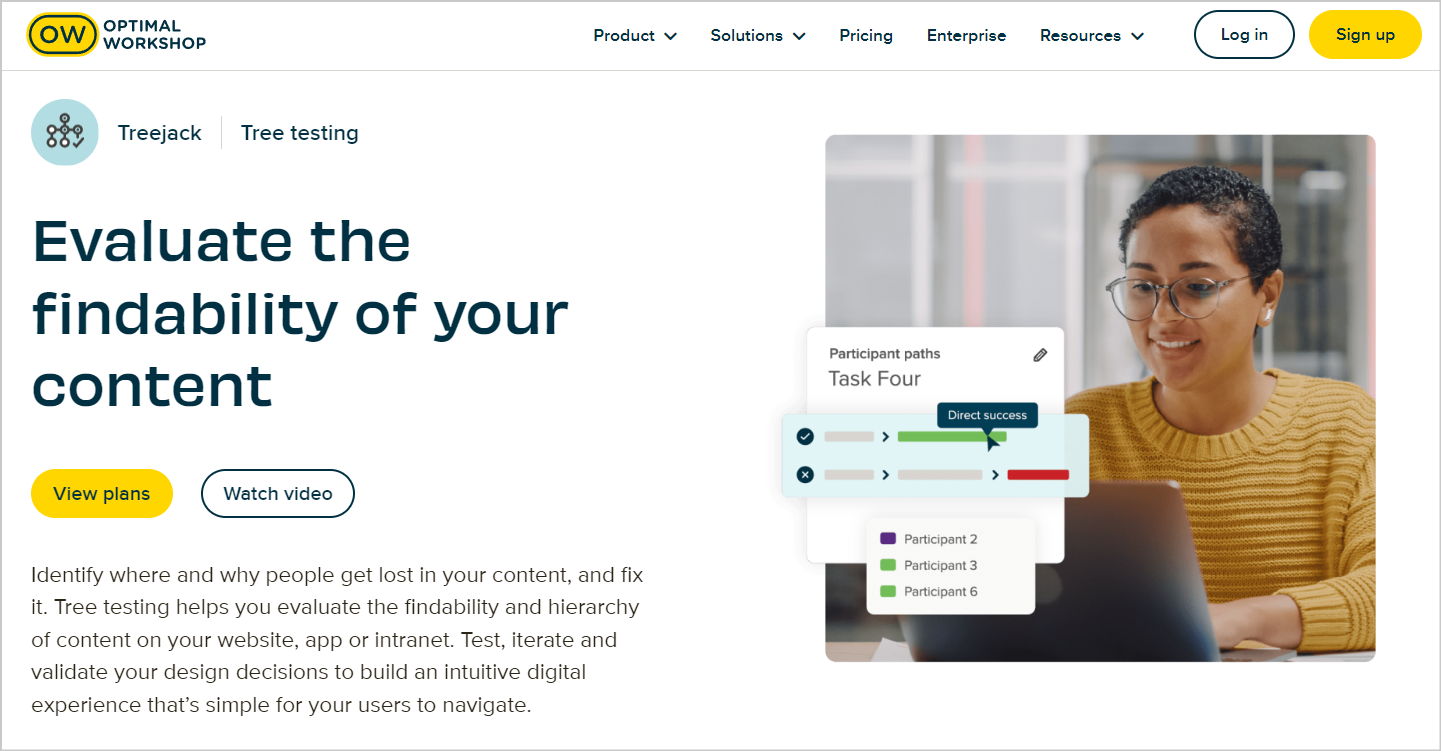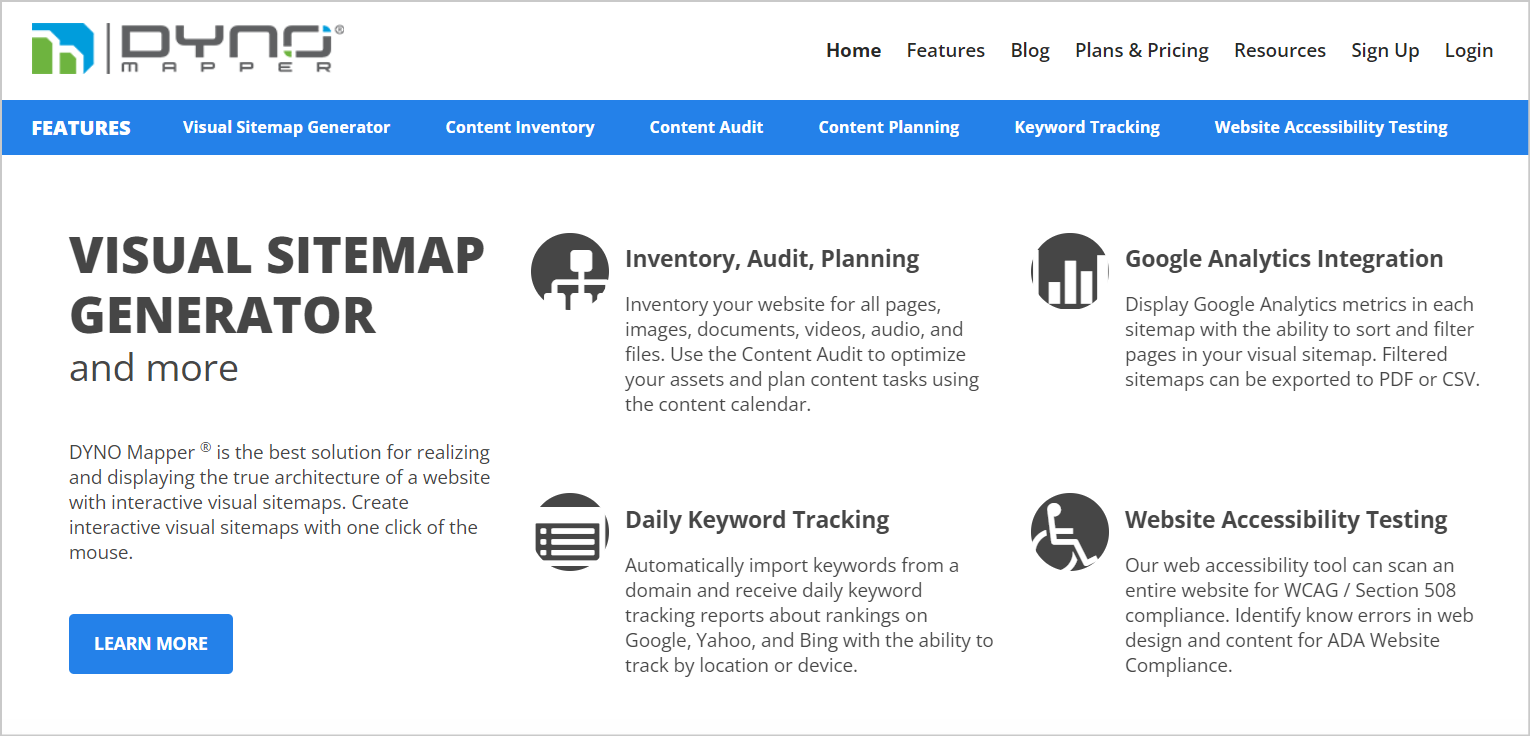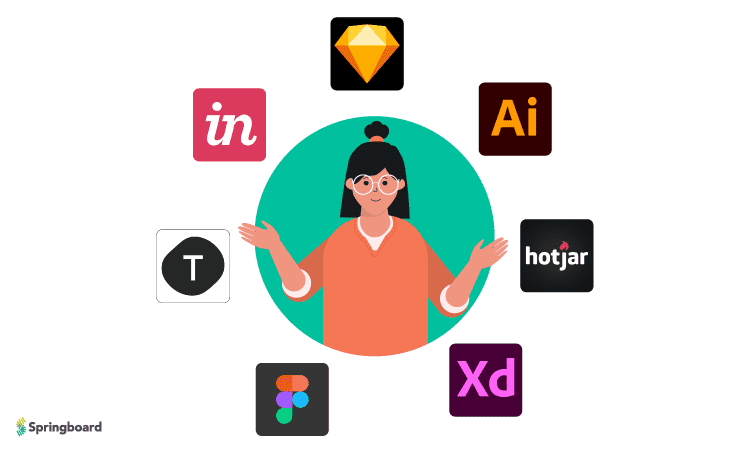Free UX Design Course
Dive into UX design with our free starter course. Transform your creative ideas into user-friendly solutions.
If you’ve ever felt overwhelmed by the amount of data presented on an app or website and felt the urge to reorganize it, then you might want to consider a job as an information architect. Information architects are responsible for how information is organized on an app or website and create intuitive knowledge systems that help businesses win customers and drive engagement.
But becoming an information architect has its obstacles. There aren’t any majors in information architecture, so it’s up to you to create your own career path. To add to this, information architecture is a rapidly evolving field, so it can be difficult to nail down what, exactly, you need to know to land a job.
That’s why we’ve written this guide. Below, we’ll outline an 8-step process that you can follow to land a job as an information architect.
What Does an Information Architect Do?
An information architect organizes the information on a website or app. They are responsible for creating sitemaps and hierarchies, which ensure optimal navigation. When done correctly, a user is able to quickly find the information they need.
How To Become an Information Architect: An Eight-Step Guide
Here’s an easy 8-step guide to becoming an information architect:
-
Learn About the Industry and Its Foundations
-
Meet the Educational Requirements
-
Hone the Essential Skills
-
Learn the Tools in an Information Architect’s Toolbox
-
Gain Practical Experience and Build Your Portfolio
-
Your Network Is Your Net Worth
-
Consider a Mentor
-
Tailor Your Resume to Each Company, Prep for Interviews, and Start Applying
Learn About the Industry and Its Foundations
Information architecture directly affects the work of content strategists and visual designers and has an impact on the overall UI design for any app or website. To be a good information architect, you must master the 5 stages of design thinking:
- Empathize with the users’ needs
- Define the users’ needs
- Ideate creative solutions
- Prototype your solutions
- Test your solutions with real users
Meet the Educational Requirements
With something as niche as information architecture, a bootcamp is often the best value. A bachelor’s degree is not necessary for a job in information architecture, but if you were to pursue degree programs, you would want to major in something like information systems, information security, or computer science.
Hone the Essential Skills
Here are the essential skills you need on your resume to thrive as an information architect:
Technical Skills
These are the technical skills you’ll need to hone:
- Programming languages. Learning to code with HTML and CSS is vital to your day-to-day tasks as an information architect. Knowing Python and Java will also be helpful. These will be the crux of the sitemaps and wireframes that information architects produce.
- Data Modeling techniques. This includes entity-relationship modeling, dimensional modeling, data structures like data flow diagrams, and metamodels.
- Data architecture fundamentals. Information architects must know how to document and comply with data quality and data governance standards and other data-gathering requirements.
- Relational database architecture and SQL systems. Information architects must know how to use DBMS software and SQL servers.
Soft Skills
Information architects need the following interpersonal skills:
- Creative problem-solving skills. Information architects need to be able to develop creative solutions that are consistent with the design team’s objectives and overall business goals.
- Business storytelling and communication skills. Information architecture is all about communicating, whether it’s through the app or website you’re designing, or to your colleagues. So having those skills is critical.
- Organizational skills. Information architects should be adept at organizing workflows and data. It’s important for both their own workflows, and for the finished product.
Learn the Tools in an Information Architect’s Toolbox
Now you have the fundamentals and educational qualifications under your belt. The next step is to know your way around popular tools:
OmniGraffle

This tool is the go-to for Mac users when it comes to information architecture design. It allows for the swift creation of wireframes and has a range of functionalities for alignment. It also integrates with software tools like Jira and other design tools like Visio.
Lucidchart

Lucidchart is a diagram software that facilitates the creation of wireframes, flow charts, and other diagrams for apps. This tool makes collaboration easy, which is necessary for information architects working with UX design teams. It also helps with brainstorming and ideation and is easy to learn.
Treejack

This is a testing tool for information architecture design and is popular for testing hierarchical designs, such as clickable website lists. Setting up tests on Treejack has a steep learning curve, but it gives you lots of user research insights.
DYNO Mapper

DYNO Mapper is another site mapping tool. It has a simple drag-and-drop editor, so it’s easy for non-UX designers to pick up. An impressive feature of this tool is that it also does some basic keyword analysis to track how your content is ranking.
Gain Practical Experience and Build Your Portfolio
Before you jump into the job search, here are a few ways to get practical experience and kickstart your information architecture career:
Volunteer Work
Every organization requires information architecture if they have a website or app. They might not know that’s what it’s called and might club it with website design, but an information architect’s job is as essential. Connect with small businesses and not-for-profits to offer your time and knowledge. You can work on a project basis or a trial basis.
Freelance Projects
Once you have some volunteer work in your portfolio, you can transition to freelance projects. This will give you a taste of the practicalities of the job. You can find projects on freelance sites like Upwork or Fiverr.
Pursue an Internship
If you want a consistent learning experience, look for internships instead of freelance projects. There’s no better way to learn about the field while also getting a sense of what an information architect’s day-to-day life is like.
Your Network Is Your Net Worth
While looking for internships and projects, also focus on building a community you can rely upon for advice and assistance. Tech jobs may have a reputation for isolated work, but getting your foot into the door and dealing with obstacles requires a network. Here’s how you can build a network:
Professionals use LinkedIn as a platform to share advice, tips, and resources. This makes it an ideal platform for newcomers in the tech field. Scour through profiles of information architects at companies you wish to work at. Follow those professionals who regularly share helpful information. Engage with them in the comments. By doing this, you can start to build long-lasting relationships.
Online Communities
Tech subreddits and Slack channels should be your go-to when it comes to looking for help. You can get career advice, resume tips, design solutions, and so on. Relevant subreddits include r/UXDesign and r/userexperience. Delta CX is a great Slack channel.
Conferences and Meetups
Look for online conferences and seminars or offline meetups in your area. These are good places to make connections, keep up with information architecture trends and get advice from seasoned professionals.
Consider a Mentor
Mentors can provide much for you, but most of all, they can give access to their invaluable network. Some bootcamps offer 1:1 mentorship, so those are worth checking out.
Tailor Your Resume to Each Company, Prep for Interviews, and Start Applying
If any bootcamps you have completed offer career assistance, now’s the time to use it. Tap into your network as you prep for your interviews. You might just find someone willing to refer you.
Get To Know Other Design Students
Josh Abenojar
Senior Consultant, User Experience Design at Booz Allen Hamilton at Booz Allen Hamilton
Aisha Butt
UX Associate at Meta
Yipeng Wang
UX Researcher at Google
How Much Can You Make as an Information Architect?
Let’s look at how much you can earn as an information architect:
Entry-Level Information Architect
Here’s a weighted range of salaries for entry-level information architects:

Mid-Level Information Architect
Here’s a range of salaries for mid-level information architects:

Senior Information Architect
As a senior information architect, you can expect to make somewhere in this range of salaries:

Where Can You Find Information Architecture Jobs?

Here are some resources for finding information architecture jobs:
LinkedIn’s job search is pretty straightforward and should be one of your first stops for finding an information architect job.
Job Boards
Other than more general job boards like Linkedin and Indeed, you can look at many tech-specific job boards. Built In and Dice are one of the best. Also, check out TechLadies, which is specifically for women, trans folks, and non-binary folks too.
Network
Let your network know when you’re looking for a job. Keep track of hashtags like #hiring and #tech so that you don’t miss out on any calls for job applications. Not every company creates a job posting on Linkedin. So do this to expand your search.
Becoming an Information Architect: Examples To Follow
Here are two examples of individuals who have paved their path to successful information architect careers:
Jason Hobbs

Jason Hobbs is a professor, researcher, and speaker and runs a design consultancy business. He founded the South Africa Experience Forum in 2006 and works with the IA Institute as an advisor and mentor.
His advice is simple: Be disciplined and adaptable. Working in any environment is invaluable for an IA dealing with multiple clients. Here’s some of his advice to young professionals:
“Work on as many projects as possible from as diverse sectors as possible. Get a mentor as soon as possible and have as many as possible in your career. Get experience in an agency, client-side, and working for yourself.”
Naoko Kawachi

When Naoko joined Japan’s leading telecom company’s PR office after college, she had no idea what information architecture was. Her job was to edit the in-house magazine and work on the corporate website.
After this, she studied computer graphics and website design as part of her second degree. She realized she wasn’t interested in visual design, and that she wanted to work on navigation and website structure. After a year of working on websites, she landed a job that allowed her to work on wireframes and structures.
How To Become an Information Architect FAQs
We’ve got the answers to your most frequently asked questions:
Is Information Architecture a Good Career?
Yes! Hiring managers are increasingly looking for information architects, and salaries are lucrative.
Are Information Architects in Demand?
Yes, information architects are in high demand. There’s a surge in digital content by companies wanting to engage with their users and customers. This makes the role of information architects vital, as their work contributes to the overall user experience.
Is It Easy To Become an Information Architect?
Yes, but you’ll need to have a plan in mind, as mapping your specific path is critical to becoming a successful information architect.
Can You Become an Information Architect Without a Degree?
You do not need a university degree to become an information architect. You can opt for a combination of bootcamps and self-study courses to learn the basics, understand the tools required, and build your portfolio.
Does Information Architecture Require Coding?
Yes. Understanding various programming languages and knowing how to debug is vital to planning digital informational layouts for websites and apps.
Since you’re here
If you want to work in design, you can. It’s that simple. With our UX Bootcamp, we’ll help you launch your design career in 9 months or less. Browse our free UX salary guide to see what you could be making
![How to Become an Information Architect [2023 Career Guide]](https://www.springboard.com/blog/wp-content/uploads/2020/07/how-to-become-an-information-architect-2023-career-guide.jpeg)





